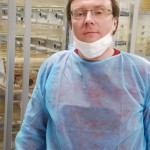Negative Immuno-Synergy between Two Sexually Transmitted Infectious Viruses: HIV-1 and HSV-2
“It is not by pure chance that these two pathogens (i.e. HIV-1 and HSV-2) co-exist, both geographically and anatomically, in the same location”
More than two third of the world’s population is infected with herpes simplex virus type 1 and type 2 (HSV-1 & HSV-2), which remain one of the most common sexually transmitted virus pathogens that causes genital herpes worldwide. HIV-1 and HSV-2 often co-exist both anatomically (in the male and female genital tract) as well as geographically. Intriguingly, as is the case for HIV, the highest prevalence of HSV-2 infection in the world is also confined to same Sub-Saharan African nations with seropositivity for HSV at up to 80% in women and 50% in men.Interestingly, both HIV-1 and HSV downplay the immune system. Understanding the cellular and molecular mechanism underlying the negative immuno-synergy whereby HSV infection affect the immune response to, and acquisition of HIV (and vice versa) is the key to successfully design an efficient genital herpes vaccine that will lessen HIV acquisition and transmission. While important research gains have been made no clinical HSV/HIV vaccines are available today. Since genital herpes appears to increase the risk of HIV acquisition and hence AIDS, an unconventional and creative approach would be to develop a vaccine that prevent HSV acquisition or treat genital herpes recurrences, and that vaccine would in turn – indirectly – reduce the incidence of HIV acquisition and hence HIV epidemic. The purposes of this review are: (1) to summarize the advances in the knowledge of the negative immuno-synergy that exists between HSV-2 with HIV; (2) highlight intervention trials to prevent HIV acquisition and transmission; and (3) discuss the possibility of developing a novel mucosal herpes vaccine strategy targeting genital HSV (rather than HIV) or even a combined vaccine that would simultaneously targets both HSV and HIV. This new and alternative line of research should become part of the HIV-1 prevention and care package. This alternative is needed to balance the ethical and financial concerns associated with the rising number of unsuccessful clinical vaccine trials targeting HIV alone.
